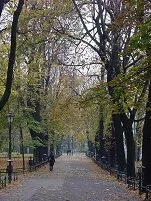Weather

Krakow
Poland's seasons are typically very distinct and due to geographical variations, weather patterns are inconsistent. Winters (December-February) can be cold and snowy; near Zakopane, in the Tatras Mountains, temperatures can dip to 0˚ F (-20˚ C) and average about 20-25˚ F (-5˚ C) during these months. Whereas, along the Baltic coast, the temperatures can be significantly warmer and some winters will rarely dip below freezing.
The spring and fall (autumn) are, again, unpredictable as the mountains can remain very cold, but cities like Krakow, Warsaw, and Gdansk can be rainy and near freezing one day, then sunny and 70˚ F (21˚ C) a week later depending on where the winds are coming from and what weather it brings with it.
During the hottest months (July-August) the mountains average about 60˚ F (16˚ C), while Krakow, Warsaw, and Gdansk all average about 72˚ F (22˚ C).